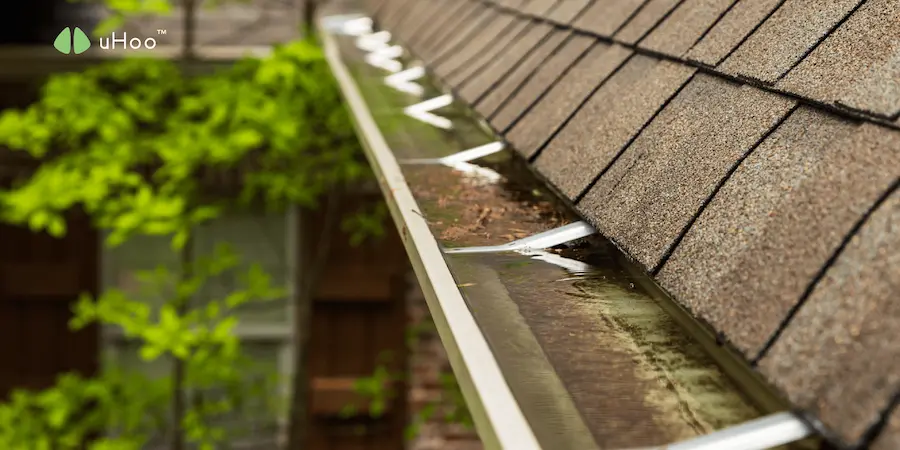Clogged gutters may seem like a minor issue, but they can have a significant impact on your home’s indoor humidity levels. When gutters become clogged with leaves, debris, and other obstructions, they can no longer effectively direct rainwater away from your home’s foundation.
This overflow of water can have several detrimental effects:
- Soil Saturation: Water that overflows from clogged gutters saturates the soil around the foundation of your home. This excess moisture can seep into your basement or crawl space, increasing humidity levels significantly.
- Foundation Issues: Prolonged exposure to excess moisture can weaken your home’s foundation, leading to structural problems and potential water damage.
- Mold Growth: High humidity levels created by water seepage can foster the growth of mold and mildew in your basement or crawl space, impacting indoor air quality and potentially posing health risks.
How to Prevent the Gutter-Humidity Connection
-
- Regular Gutter Cleaning: Regularly inspect and clean your gutters to remove leaves, debris, and other obstructions.
- Proper Gutter Installation: Ensure your gutters are properly installed with sufficient slope to allow for proper water drainage.
- Install Gutter Guards: Consider installing gutter guards to prevent leaves and debris from entering your gutters in the first place.
- Monitor Humidity Levels: Identify potential issues related to clogged gutters with the help of uHoo air quality monitor. uHoo continuously monitors humidity levels in your home and lets you know about any sudden spikes which could indicate a potential water intrusion issue, such as overflowing gutters. By monitoring these changes, you can take proactive steps to address the issue and prevent further damage.



